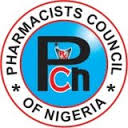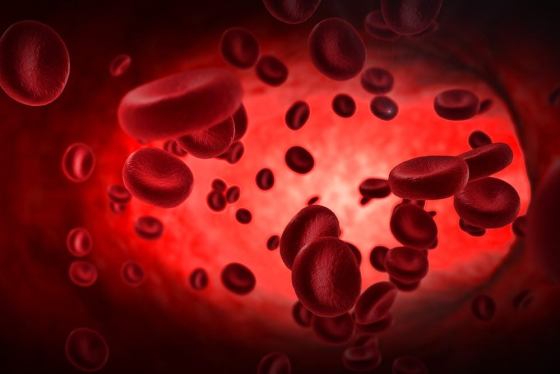. Fungal compound makes superbugs susceptible to conventional antibiotic defence
Researchers at McMaster University in Hamilton have discovered a way to disarm one of the most frightening weapons bacteria have developed to resist antibiotic drugs. And they discovered this potentially lifesaving compound in an unlikely place: a soil sample from a national park in Nova Scotia. The discovery is featured today on the cover of the prestigious journal Nature.
"Our finding offers the first hope that we might be able to get around this resistance mechanism," said Prof. Gerry Wright, who led the research.
The discovery targets antibiotic-resistant "superbugs," which produce an enzyme called NDM-1 (New Delhi metallo-beta-lactamase), allowing them to fight off almost every antibiotic in the medicine cabinet, including carbepenems — an important class of drugs that doctors keep in reserve as a last resort against multi-resistant bacteria. The emergence of NDM-1 in pathogens such as E. coli has turned formerly treatable infections into potentially deadly diseases. The only weapons left on the shelf are highly toxic with extreme side-effects, and doctors predict the bugs will soon develop resistance even to those drugs.
"It’s an antibiotic resistance enzyme that we didn’t really know about until about five years ago. It has spread around the world and multiple organisms have acquired it, and so it’s become a pretty significant public health threat in a very short period of time," Wright said.
"NDM-1 is the pinnacle of antibiotic resistance," said Dr. John Conly, director of the Centre for Antimicrobial Resistance at the University of Calgary. NDM-1 has spread to every continent except Antarctica, and there have been NDM-1 outbreaks in Canada, including in B.C.’s Fraser Valley.
With so much concern in the medical community, Wright went looking for something that could tackle NDM-1. What he found was sitting in a refrigerator in his laboratory. That’s where he keeps his collection of soil bacteria, harvested from random samples of Canadian dirt that he has asked students and friends to collect as they travel around the country.
Those bacteria produce hundreds of chemical compounds, which they use to defend themselves against other bacteria — chemicals that might ultimately become the basis of future drugs for humans.
"We screened that collection for molecules that would reverse this resistance, that would block this NDM-1 protein," Wright said, "and lo and behold, we found one."
The compound they discovered is produced by the Aspergillus fungus. It was harvested from a forest soil sample collected by one of Wright’s students who was hiking in Kejimkuijik National Park near Caledonia, N.S.
The molecule is called AMA (aspergillomarasmine A). Once it was isolated, the researchers checked the chemical structure on a computer database and realized they had rediscovered a long-discarded compound, first identified in the 1960s as a cause of leaf wilt in plants.
"It had been catalogued," Wright said, "and then no one ever thought of it again as being useful until we repurified it one more time 50 years later."
AMA works not by killing the bacteria, but by turning off the resistance mechanism, making the bacteria vulnerable to an existing drug again.
The goal is to develop AMA into a compound that could be used along with older antibiotics, a combination approach that, if it works in humans, could reverse antibiotic resistance, and breathe new life into the antibiotic arsenal.
"The drugs that we have are fantastic. We’ve used them for years, we know how to treat patients with them. Clinicians are familiar with their side-effects, they’re familiar with how to dose them," Wright said. "If we can stop the resistance, then we get to use the drugs again."
The World Health Organization has called antibiotic resistance an international public health threat. In April, it warned that the world is headed for a post-antibiotic era where common infections and minor injuries could become fatal if bacteria can fight off all of the existing drugs. Already, Canadian doctors report that up to 25 per cent of formerly routine urinary tract infections are resistant to common antibiotics.
As resistance grows, the supply of new drugs dwindles. Many of the large pharmaceutical companies have gotten out of the antibiotics business, partly because the challenges in finding effective new compounds, along with regulatory hurdles, mean the antibiotic business is no longer profitable.
All of that means there are few new antibiotics in the drug development pipeline. That’s why researchers are now exploring the idea of using a combination approach to disarm resistant bacteria and make them vulnerable to the old drugs.
"We need to look at synergistic ways to attack bacteria, rather than one drug," said Dr. David Patrick, medical epidemiology lead for antimicrobial resistance at the B.C. Centre for Disease Control. "It’s a wonderful discovery, if it can bridge the gap from test tube to people."
"This may rank as a very significant discovery, provided this agent is non-toxic in humans," said Conly.
So far, the McMaster researchers have shown that the compound is effective against bacteria carrying NDM-1. They’ve also shown that it fights infection in mice and rats.
But it still must be extensively tested in humans to see if it works and to discover possible side-effects. And at this point, the biggest hurdle is convincing a drug company to make the multimillion dollar investment to begin the long process of moving the discovery from the lab to the pharmacy shelf.​
By Kelly Crowe,
CBC News
ABUJA: Training Schedule for Basic Life Support BLS, Pediatric Advanced Life Support (PALS), Advanced Cardiovascular Life Support ACLS, First Aid, CPR, AED
PORTHARCOURT: Training Schedule for Basic Life Support BLS, Pediatric Advanced Life Support (PALS), Advanced Cardiovascular Life Support ACLS, First Aid, CPR, AED
LAGOS: Training Schedule for Basic Life Support BLS, Pediatric Advanced Life Support (PALS), Advanced Cardiovascular Life Support ACLS, First Aid, CPR, AED





